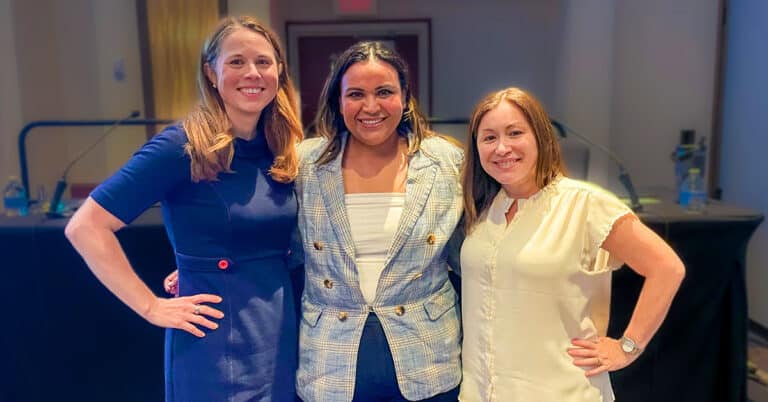 Last week I explored some trends in how states are approaching ESSA’s School Support and Improvement provisions. The trends I featured highlight the ways in which states are empowering districts and schools in the improvement process, as well as how states plan to customize supports to fit what a specific school’s needs. Though a large number of states were included in that analysis, there are a few states that stood out to me. Each of the states I have chosen to feature are submitting their draft plans in September. There’s always the possibility that they will be asked to shift their focus by the US Department of Education, however they are still worth highlighting.
Last week I explored some trends in how states are approaching ESSA’s School Support and Improvement provisions. The trends I featured highlight the ways in which states are empowering districts and schools in the improvement process, as well as how states plan to customize supports to fit what a specific school’s needs. Though a large number of states were included in that analysis, there are a few states that stood out to me. Each of the states I have chosen to feature are submitting their draft plans in September. There’s always the possibility that they will be asked to shift their focus by the US Department of Education, however they are still worth highlighting.
Read about three states creating opportunities for schools to improve their accountability status in ways that focus on empowerment, engagement and innovation:
Rhode Island: Providing Principles and Strategies that Prioritize Community Involvement
 Rhode Island’s plan does a thorough job outlining the state’s philosophy for change alongside strategies for improvement. Because the underlying principles are so specific, I thought it would be worth including each of them in this post, rather than synthesizing them.
Rhode Island’s plan does a thorough job outlining the state’s philosophy for change alongside strategies for improvement. Because the underlying principles are so specific, I thought it would be worth including each of them in this post, rather than synthesizing them.
Here are Rhode Island’s principles for school improvement as stated in their plan:
- A belief that learning must be personalized to meet the needs of all students, and that a broad variety of pathways to college and career readiness must be made available, so that student and family choice can be a key driver in educational attainment.
- School improvement requires innovation, and that innovation cannot be achieved through coercion, but rather through empowerment of those closest to the students, namely families and educators.
- This empowerment must come through the form of greater flexibility and autonomy at the school level, while maintaining tight standards of accountability for outcomes, and taking appropriate action if needed when outcomes are not met.
- School improvement is the work of all members of the state community, meaning Rhode Island must emphasize shared responsibility for improving opportunities and outcomes for every Rhode Island student. This mutual responsibility acknowledges that all education partners in the state can and should play a role in improving access to high quality opportunities and educational outcomes for students.
- School improvement is not possible without authentically engaged communities and families at all stages of the planning and implementation of school improvement efforts.
These principles are important for a few different reasons. They establish a shared belief that all students can succeed, put forth expectations for responsibility at all levels of the system and, in the same vein, they elevate priorities so that everyone is operating with a common understanding that schools, and the state and the community will all be held accountable for turning schools around.
The state’s outlined strategies for improvement align with the principles above (precisely why I think establishing principles and overarching visions are so important—they ground the strategies in something specific). One strategy that stuck out to me is that the state will require districts with schools identified for Comprehensive Support and Improvement to put together a Community Advisory Board (CAB). This board is designed to give community stakeholders a structured way to provide feedback and support on the initial development of an improvement plan, as well as to provide ongoing support during the improvement process. The state notes, and I think it’s important to include here, that the role of the CAB is not to operate schools, but rather to provide the community voice.
Although school districts have flexibility in establishing a Community Advisory Board (CAB) to fit the district’s particular needs, the board’s membership should, according to the state’s ESSA plan, “be representative of a broad range of community stakeholders from the communities served by the identified school(s).” Among the options included by the state are community-based organization representatives, members of the faith community, business leaders, representatives of advocacy organizations and afterschool or summer program leaders, among others.
The CAB is charged with, at the very least, reporting on a school’s improvement status annually to the local school board and to the Rhode Island Department of Education, giving them more ownership in the process because they are held accountable to the school’s improvement more than just in a traditional “advisory” status. School districts may also call on CABs to help identify direct roles that other community members can play in the school improvement process. I like this because it elevates school improvement as a community issue rather than just as a problem to be solved in a vacuum, and it allows people to think creatively about what’s right for their specific needs.
Rhode Island’s Department of Education will also reserve 50% of its school improvement funding to support additional school improvement efforts. These efforts include Innovation Grants for strategies that improve student achievement at low-performing schools. The state will identify strategic priorities annually that will increase students’ access to learning opportunities and pathways that prepare them for college and career success, as well as proficiency-based student-centered learning strategies.
Read the complete Rhode Island state’s plan.
Tennessee: Empowerment, Innovation and Data Collection
 Tennessee’s department of education also highlights the principles under which it will operate through ESSA. Though I will not include them in full here, what sets Tennessee apart from other states to me is the direct connection between its accountability principles and school improvement, creating clear alignment between those two sections of the plan. The state’s accountability principles focus on meeting the needs of, and prioritizing growth for, students at all levels of proficiency, including growth for students who have already reached proficiency. The state’s accountability principles also prioritize continuous improvement for schools and districts by aligning data and customizing improvement strategies based on district needs.
Tennessee’s department of education also highlights the principles under which it will operate through ESSA. Though I will not include them in full here, what sets Tennessee apart from other states to me is the direct connection between its accountability principles and school improvement, creating clear alignment between those two sections of the plan. The state’s accountability principles focus on meeting the needs of, and prioritizing growth for, students at all levels of proficiency, including growth for students who have already reached proficiency. The state’s accountability principles also prioritize continuous improvement for schools and districts by aligning data and customizing improvement strategies based on district needs.
Tennessee also includes a range of emphasized strategies to meet those goals and principles for schools in need of support and improvement. With an overall focus on empowering schools to focus on their unique needs, the state will do the following:
- Empower leaders and educators with access to accurate and timely data linked to clear action steps.
- Provide decision-making supports for districts—communicating and prioritizing choice points, options, and flexibility for various initiatives.
- Provide coaching and support.
- Encourage innovation through earned autonomy for high-performing districts.
- Provide pilot opportunities and space for districts to innovate.
- Create strong networks of learning and opportunities to contribute to decision-making around statewide initiatives.
Additionally, Tennessee has a risk-analysis tool designed to identify districts for targeted technical assistance and support. Although I don’t know the details of the indicators they use, it contains more than 60 indicators across multiple areas, including federal funding, student achievement, human capital, the number of federal discretionary grants received, audit findings, predictive performance indicators and other points of data that could inform the need of a specific school. The state is focused on continuous cycles of improvement in schools, and monitors schools’ progress by taking “snapshots” throughout the year using this tool.
Tennessee has also opted to continue the state’s Innovation Zone model, which, according to their plan, acts like a district within a district. Innovation Zones provide accelerated turnaround for low-performing schools by providing increased autonomy and a chance for true innovation for school leaders and educators by exempting them from specific district-level policies and procedures. Districts can apply for Innovation Zone grants as a school turnaround strategy.
New York: Establishing A Participatory Budgeting Process for Parents
 New York’s philosophy is that schools receiving support and improvement funds need flexibility to consider support strategies that are localized and fit their specific needs. The state expects that school improvement expenditures result in tangible improvements, and wants to ensure that schools and districts have ownership over the spending choices they have made.
New York’s philosophy is that schools receiving support and improvement funds need flexibility to consider support strategies that are localized and fit their specific needs. The state expects that school improvement expenditures result in tangible improvements, and wants to ensure that schools and districts have ownership over the spending choices they have made.
One strategy they’ve decided to implement, participatory budgeting, is fascinating to me, in large part because I was previously unfamiliar with the concept. According to the nonprofit organization The Participatory Budgeting Project, “Participatory budgeting (PB) is a different way to manage public money, and to engage people in government. It is a democratic process in which community members directly decide how to spend part of a public budget. It enables taxpayers to work with government to make the budget decisions that affect their lives.”
New York will require schools receiving funds for Comprehensive Support and Improvement schools to implement a participatory budgeting process that allows parents to help determine how these funds are spent, and as a way to give parents a choice in their child’s education. There is some oversight. Part of the process requires that parents help determine the most appropriate ways for the school to spend the funds connected to the results of the school’s needs assessment. I will be curious to see what specific strategies schools use to engage parents in this process, and how the state will support them in those efforts.
Read the complete New York state ’s plan.
These are not the only states with interesting approaches to address School Support and Improvement. As I mentioned in my last post, “ESSA Trends in School Support and Improvement: Meeting Students Where They Are,” the hard part begins when communities are asked to begin implementing these strategies, so it remains to be seen if these are the right ones to use. However, especially in the case of Tennessee and Rhode Island, because the underlying philosophies and principles behind the strategies presented create a system of support for struggling schools. Hopefully, with a focus on continuous improvement, states will also continue to learn from each other and continue to improve the ways in which they help schools become, and remain, successful.







